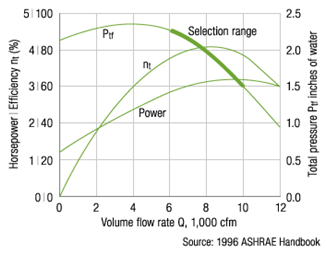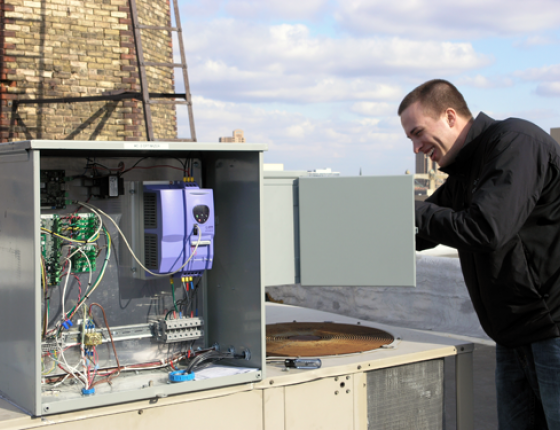Project Background and Process
Heating and air conditioning account for over 25 percent of the energy use of commercial buildings,1 and rooftop units serve 40 percent of commercial floorspace. Upgrading to a more efficient model is often expensive, and even for older units, does not achieve the savings necessary to justify the investment. A more cost-effective option, especially for small businesses, is to upgrade the system controls to operate their existing units at design efficiency.
Recent advances in the cost and size of variable speed drive technologies have made this a promising retrofit option for a variety of building types. Installing new drives and controls on existing units presents an opportunity for businesses to reduce heating and cooling energy use by operating air distribution fans in their most efficient range. However, this technology is not widely adopted for rooftop unit retrofits, and requires field testing to confirm savings and resolve operations issues.
The Advanced Rooftop HVAC Unit Controls Pilot will determine the expected energy savings and cost effectiveness of two market-ready advanced control strategies that look promising, but have not been implemented or evaluated on a large scale. CEE staff will field monitor 60 units on four Minnesota buildings to verify real building savings potential. They will also assess non-energy benefits including reliability, maintenance costs, and occupant comfort. In addition, the research team has been testing the optimization packages on rooftop units serving CEE’s main downtown office using wireless communication technology. CEE staff can control the operation of the unit through a web interface, to change settings remotely in real time.
This project supported in part by a grant from the Minnesota Department of Commerce, Division of Energy Resources through the Conservation Applied Research and Development (CARD) program. And with co-funding by CEE in support of its nonprofit mission to advance research, knowledge dissemination, and program design in the field of energy efficiency.

Key Findings
-
Human comfort was not impacted by the integration of RTU optimization controls.
-
While energy savings were variable, electric energy savings offset negative gas energy savings on a cost basis using typical electric and gas energy rates, achieving a net financial benefit.
-
All tested sites were evaluated to have a payback of more than five years, however, higher baseline energy use buildings may be able to achieve faster, cost-effective energy savings.
-
Future opportunities for utility energy savings would benefit from flexible program design, making room for maturing technologies and incorporating support from contractors to inform control purchases, installations, and maintenance.
Related Reports and Tools
